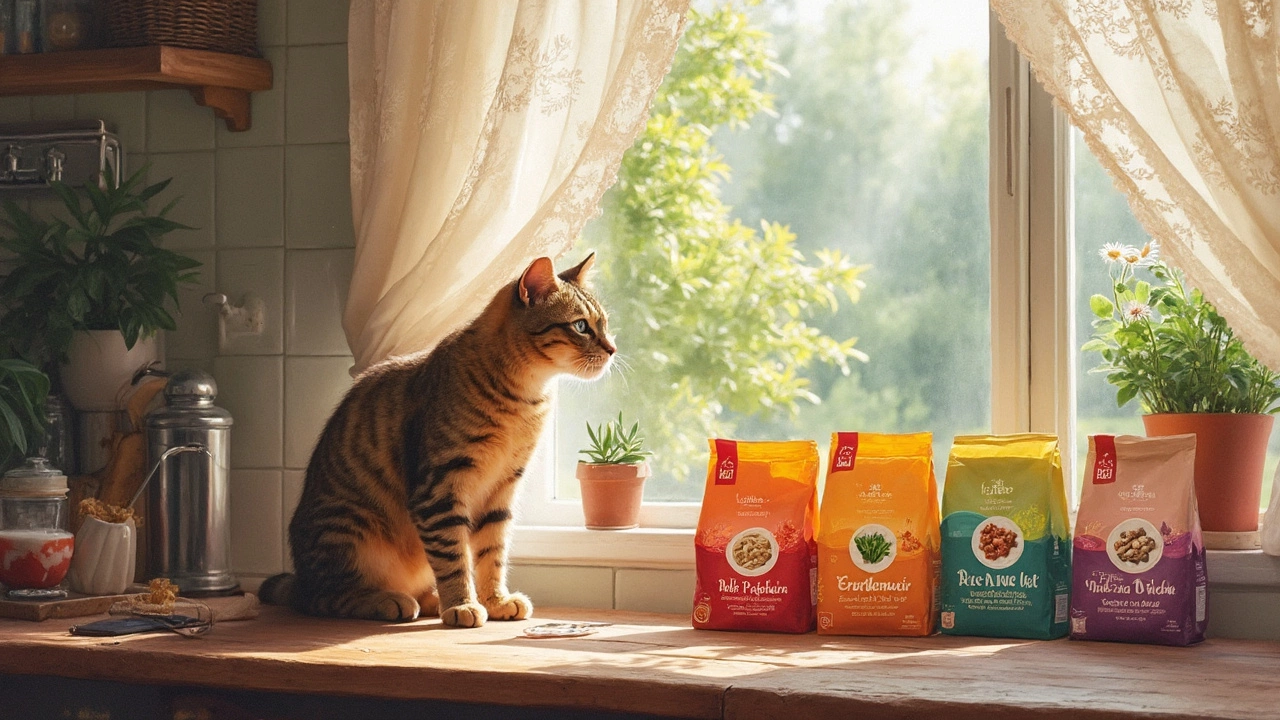Cat Diet Basics: How to Keep Your Kitty Healthy and Happy
If you’re staring at a bowl of kibble and wondering if it’s enough, you’re not alone. Cats have specific nutrition needs that differ from dogs and even from other cats. Getting those needs right means your cat will stay active, maintain a shiny coat, and avoid costly vet trips.
First off, cats are obligate carnivores. That means they thrive on meat‑based proteins and need very little carbs. Look for foods that list real meat—like chicken, turkey, or fish—at the top of the ingredient list. Avoid products that rely on fillers such as corn or wheat, because those don’t provide the amino acids cats need.
What Makes a Balanced Cat Diet?
A balanced diet includes protein, fat, moisture, and a few essential vitamins and minerals. Protein should make up at least 30 % of the calories, while fats supply energy and help absorb fat‑soluble vitamins. Taurine, an amino acid, is crucial; a deficiency can cause heart and eye problems. Most commercial cat foods add taurine, but if you’re feeding homemade meals, you’ll need a supplement.
Moisture is another hidden hero. Cats often don’t drink enough water, so wet food or adding a splash of water to dry kibble can keep them hydrated. Hydration supports kidney health, which is a common issue as cats age.
Choosing the Right Treats for Your Kitty
Treats are a fun way to bond, but they shouldn’t make up more than 10 % of daily calories. Pick treats that list a real meat source first and avoid artificial flavors or colors. If you love to spoil your cat with crunchy bites, look for grain‑free options that include ingredients like salmon or duck.
Because our shop specializes in premium dog treats, we also stock a selection of cat‑friendly snacks—think freeze‑dried chicken strips and low‑calorie fish bites. These are made with the same quality standards: natural ingredients, no unnecessary additives, and a taste cats love.
When introducing a new treat, start with a small piece and watch for any digestive upset. Every cat’s tummy reacts differently, so a little trial run can save a lot of trouble.
Finally, remember to adjust portion sizes as your cat ages or changes activity level. A kitten needs more calories per pound than a senior cat, and a couch‑potato indoor cat will require fewer calories than an outdoor explorer.
In short, focus on meat‑first foods, keep an eye on moisture, add a safe treat now and then, and monitor weight. Follow these simple steps, and you’ll give your cat a diet that supports a long, lively life.

Can My Cat Thrive on Dry Food Alone?
Many cat owners wonder whether their feline companions can live healthily on dry food alone. While dry food is popular for its convenience and cost-effectiveness, it's important to consider how it impacts a cat's overall health. This article explores the nutritional needs of cats, the benefits and drawbacks of dry food, and how to make sure your cat's diet is balanced. Learn practical tips to ensure your furry friend stays happy and healthy.
View more
Is It OK to Leave Wet Cat Food Out All Day?
Leaving wet cat food out all day is a common practice, but it may not be the best decision for your feline friend. This article explores the pros and cons of leaving wet cat food out, how it can affect your cat's health, and practical tips to ensure their meals remain fresh and safe.
View more